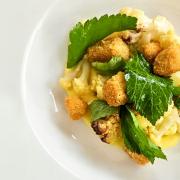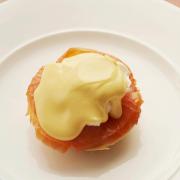Nothing beats the sweetness of peas eaten fresh off the vine. Fortunately they are easy to grow so to experience this culinary treat get sowing to reap the rewards in early summer
For many, peas are the quintessential British vegetable that represents everything that is good about gardening, but even if you don’t buy into such sentimentality, you should grow a row or two simply because their fresh, stimulating taste makes the mouth water. Peas not only taste good, but they are also versatile in the kitchen. With some varieties, just the young seeds are eaten, while in others, the whole pod is consumed.
Shelling types
A garden standard, this type of pea is valued for the young seeds that are ‘shelled’ from the outside walls of the pods. Harvest time is critical, and picking should be done when the pods are well-filled and the seeds are tender and sweet. Wait too long, and too much of the sugar is converted to starch, defeating the whole point of growing peas.
Shelling peas conveniently fall into either smooth- or wrinkled-seeded types:
Smooth-seeded: The name refers to the condition of the mature seed, which has a relatively smooth surface. Unfortunately, when it comes to smooth types, there is both good news and bad news. The good news is that they are hardy, making them ideal for sowing in November and overwintering outdoors for an early harvest. The bad news lies in the quality of the seeds themselves – sugar is converted to starch quite quickly, producing an unpalatable mealy texture. Possibly for this reason, only a limited number of smooth-seeded varieties are currently being sold. Meteor is a decent representative of the type, and a good one to try if you want to grow overwintered peas outdoors.
Wrinkle-seeded: The mature seed of wrinkled varieties have a distinctively dimpled surface that justifies the name. There are plenty of varieties to choose from, and for good reason – they taste great and are the shelling pea of choice for discerning gardeners. Picked in the prime of their youth, the seeds have a tender skin enclosing a soft inside that is smooth and sweet. The plants, however, are not as hardy as those of the smooth-seeded type, so sowing should be delayed until March.
Edible-podded types
Like the name says, both the pods and seeds can be eaten in this type. Based on appearance and eating quality, there are two distinct versions:
Mangetout: From the French word to ‘eat all’ mangetout have flat, thin-walled pods which are harvested when the seeds are just starting to fill out and become noticeable as small bumps on the outside of the pod walls. Though mangetout peas are closely associated with stir fries, they benefit greatly from outside-the-box thinking. They could, for example, be added to creamy pasta dishes; dropped into egg drop soup; or lightly steamed and tossed in a salad.
Sugarsnap: Unlike mangetouts, sugarsnaps produce plump pods with thick walls and engorged seeds. Crunchy, sweet and luxurious, they are great either stir fried or steamed, though they are just as good eaten raw. If you grow only one pea, it should be a sugarsnap – it is a decadent treat that shouldn’t be missed.
Speed is of the essence
Varieties of shelling peas have traditionally been classified according to the length of time it takes from sowing to harvesting. As a general rule of thumb, ‘first earlies’ can be harvested as quickly as 11 weeks after sowing; ‘main crop’ varieties may take as long as 16 weeks; and ‘second earlies’ fall somewhere between the two. Growing conditions affect both seed germination and plant growth, so harvest times are best seen as guidelines only.
Like shelling peas, the harvest times of edible-podded varieties are noticeably different. For example, the mangetout Carouby de Maussane is a bit of a laggard – luckily, its colourful flowers and great taste more than make up for its tardiness. And when it comes to dwarf sugarsnaps, Sugar Ann is a little ahead of Delikett, though the pods of Delikett are darker green and much more attractive.
The long and the short
Peas are like school kids – they come in a range of heights. Due to modern plant breeding, the majority of peas are dwarf varieties that grow about 30 to 90cm tall. Though they will benefit from some support to help them grow upright, the shorter ones can be left to get by on their own.
Tall varieties are quite rare nowadays, and can be difficult to track down. Both Alderman (a shelling type) and Sugar Snap, however, are easily available, and the plants of both varieties can grow well over a metre tall. They must be supported otherwise they will end up as a jumble of vines that makes harvesting a pain rather than a pleasure.
Getting started
First choose a well-drained spot in the garden and dig over the soil. Then you can get planting. Grow the crop in double rows placed close together: a distance of 20 to 22cm between the two rows will do. Sow the seeds directly into the ground 2 to 3cm deep, leaving 7 to 8cm between seeds in each row.
A pathway must be left between the double rows, though the width of the pathway depends on the growth habit of the plants: leave a distance of 60cm between double rows of dwarf varieties and 1.5 to 18 meters for taller ones. The distances are measured from the centre of a double row to the centre of the adjacent one.
Dwarf varieties can be grown without the need for support from stakes or netting. Taller varieties need to be supported so that their vines can grow upright in an orderly manner. Just before or after the seeds germinate, poke pea sticks (these can be created from twiggy tree prunings such as hazel) into the ground between the double rows. Alternatively, use pea netting held upright by wooden or metal posts.
--------------------------------------------------------
About Michael Michaud
Michael and Joy Michaud run Sea Spring Seeds, a Dorset-based company specialising in the production and sale of vegetable seeds and chilli plants. They also breed chillies and have developed several new varieties, including the world’s hottest chilli the Dorset Naga. For more details visit their website seaspringseeds.co.uk.



























